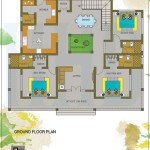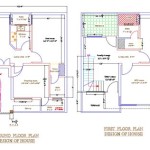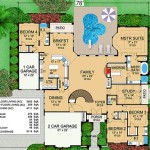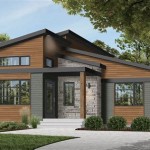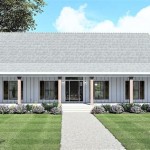Solar Powered Home Plans
Harnessing the sun's energy to power homes is becoming increasingly popular and practical. Solar powered home plans integrate solar energy systems seamlessly into the design, maximizing efficiency and minimizing environmental impact. These plans consider factors like roof orientation, window placement, and insulation to optimize energy generation and consumption. This article explores key aspects of incorporating solar power into home design.
Key Considerations for Solar Home Design
Effective solar home design requires careful consideration of several factors:
- Roof Orientation and Angle: South-facing roofs in the Northern Hemisphere generally receive the most sunlight and are ideal for solar panel installation. The optimal angle depends on the latitude.
- Shading: Trees, nearby buildings, or other obstructions can significantly reduce solar panel efficiency. Plans should minimize shading or incorporate strategies to mitigate its impact.
- Climate: Local climate conditions, including average sunshine hours and temperature fluctuations, influence system sizing and performance.
- Energy Efficiency: Implementing energy-efficient building materials and appliances reduces overall energy demands, making the solar system more effective.
- Aesthetics: Integrating solar panels seamlessly into the roof design maintains the home's aesthetic appeal.
Types of Solar Power Systems
Several types of solar power systems can be integrated into home designs:
- Grid-Tied Systems: These systems are connected to the utility grid, allowing homeowners to draw power from the grid when solar production is low and sell excess energy back to the grid.
- Off-Grid Systems: These systems operate independently of the utility grid and typically require battery storage to provide power when the sun isn't shining.
- Hybrid Systems: Hybrid systems combine grid-tied and off-grid features, offering backup power during grid outages while still benefiting from grid connection.
Integrating Solar Panels into the Roof
Integrating solar panels into the roof design can enhance both aesthetics and functionality:
- Building-Integrated Photovoltaics (BIPV): BIPV systems replace traditional roofing materials with solar panels, creating a sleek and integrated appearance.
- Solar Shingles: Solar shingles mimic the appearance of regular asphalt shingles while generating electricity.
- Traditional Panel Mounting: Conventional solar panels are mounted on racks attached to the roof.
Energy-Efficient Building Materials and Appliances
Maximizing energy efficiency is crucial for solar-powered homes:
- Insulation: Proper insulation minimizes heat loss in the winter and heat gain in the summer, reducing the load on the heating and cooling systems.
- High-Performance Windows: Energy-efficient windows minimize heat transfer, improving comfort and energy savings.
- Energy Star Appliances: Energy Star certified appliances consume less energy than standard models.
- LED Lighting: LED lighting provides significant energy savings compared to traditional incandescent bulbs.
Benefits of Solar Powered Home Plans
Solar powered homes offer several significant advantages:
- Reduced Energy Costs: Generating electricity from sunlight reduces or eliminates monthly electricity bills.
- Environmental Friendliness: Solar energy is a clean, renewable resource that reduces reliance on fossil fuels.
- Increased Home Value: Homes with solar power systems often have higher resale values.
- Energy Independence: Solar power provides a degree of energy independence, particularly with battery storage.
Planning and Implementation
Careful planning and implementation are essential for successful solar home projects:
- Site Assessment: A thorough site assessment evaluates solar potential, shading, and roof suitability.
- System Design: A professional solar installer designs the system based on energy needs and site conditions.
- Permitting: Obtaining necessary permits and approvals from local authorities is crucial.
- Installation: Qualified professionals should install the solar power system.
- Monitoring and Maintenance: Regular monitoring and maintenance ensure optimal system performance.
Financial Incentives and Rebates
Various financial incentives can help offset the cost of solar installations:
- Federal Tax Credits: The federal government offers tax credits for residential solar installations.
- State and Local Incentives: Many states and municipalities offer rebates, tax credits, or other incentives for solar energy.
- Net Metering: Net metering programs allow homeowners to sell excess solar energy back to the utility grid.
Future of Solar Powered Homes
Advancements in solar technology and increasing affordability are driving the growth of solar-powered homes:
- Improved Efficiency: Solar panel technology is constantly evolving, leading to higher efficiency rates and greater energy production.
- Battery Storage Technology: Advances in battery technology are improving energy storage capacity and affordability.
- Smart Home Integration: Integrating solar power with smart home systems allows for optimized energy management and consumption.

Passive Solar House Design Ecoliv

Passive Solar House Plans For Our Off Grid Homestead Byexample Com

Green Passive Solar House Plans 3

Top 15 Solar Powered Home Designs Plus Their Costs In 2024

Affordable Passive Solar Planbook Appalachian Energy Center

Culture Of Lifestyles An Example A Passive Solar House Plan Plans Homes

Green Passive Solar House Plans 3

Step By Guide On How To Set Up Solar Power At Home

Solar Hybrid Home Plan

Passive Design Green Home Technology Center


